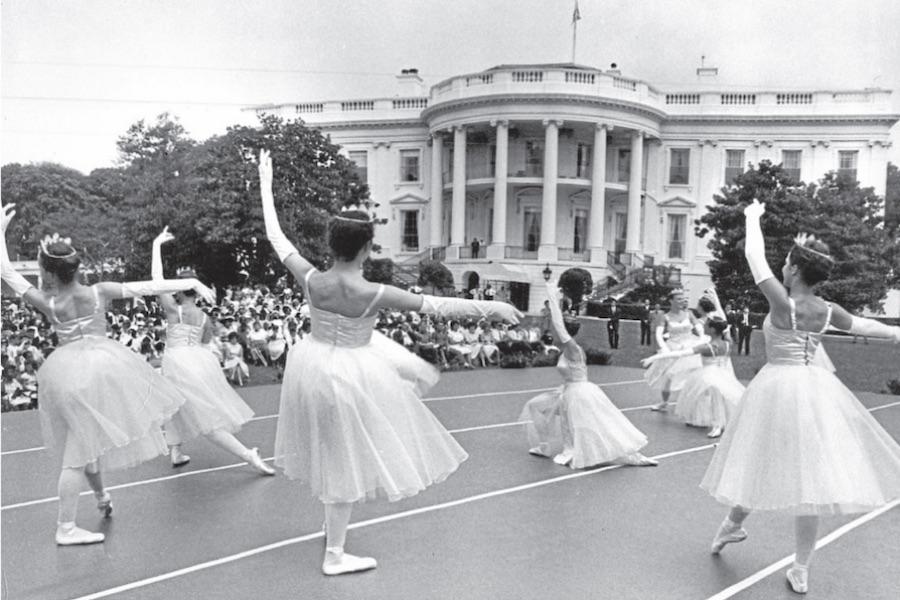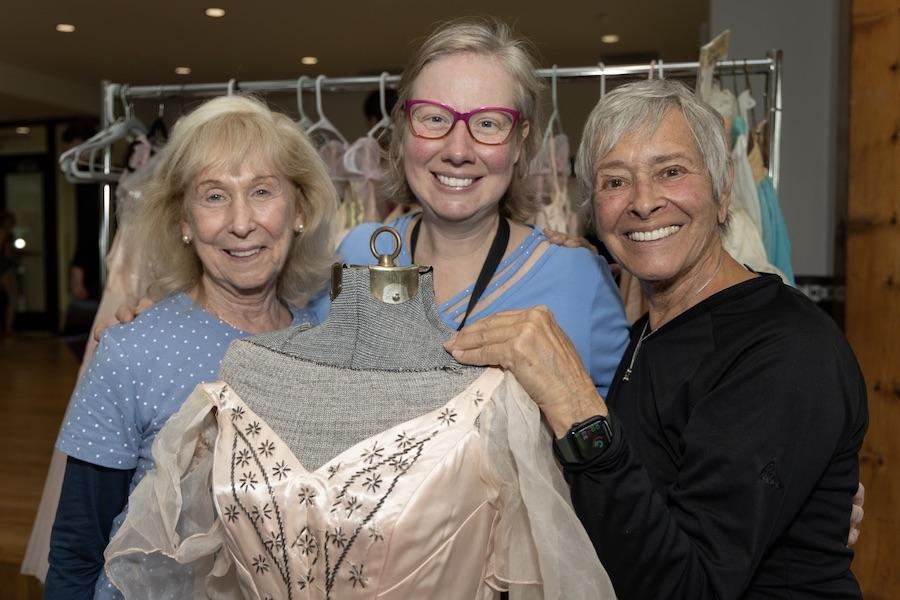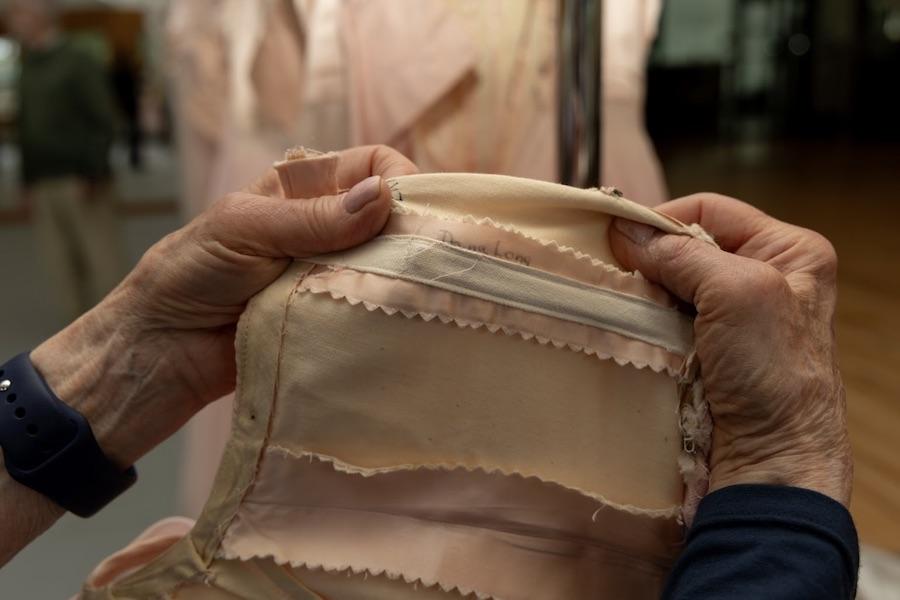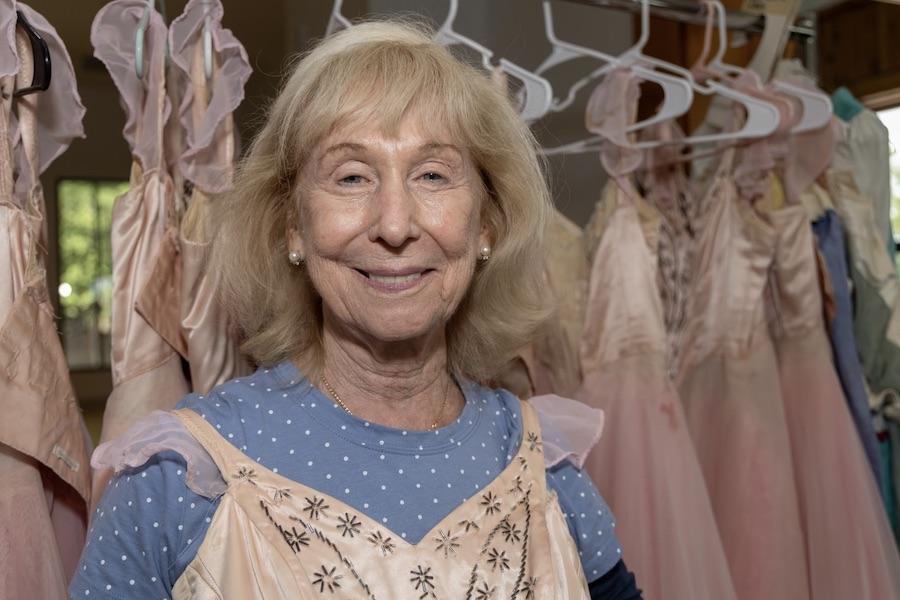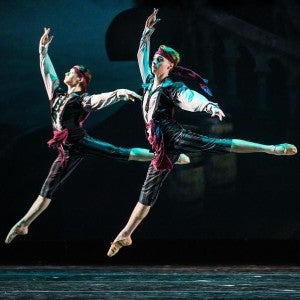Sleeping Beauty performance to feature costumes from 1962 performance at the Kennedy White House
The costumes were found in storage and have now been lovingly restored for the stage.
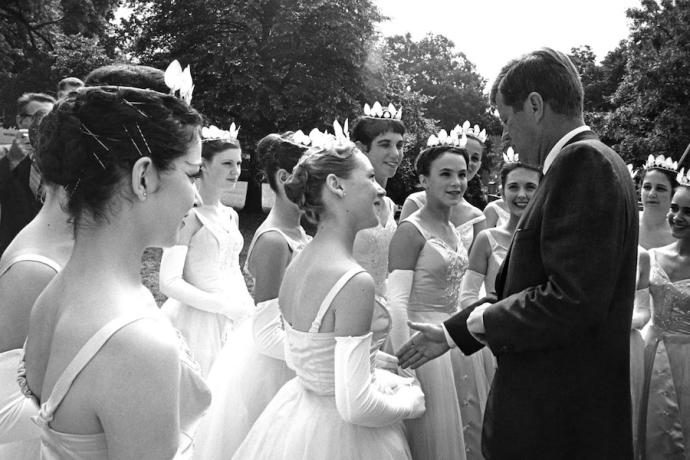
IAC/NMC dancers shake hands with President John F. Kennedy in 1962. Their restored tutus will be featured in Sleeping Beauty this weekend.
What’s the connection between an old black-and-white photo of John F. Kennedy with some young dancers and Interlochen’s production of Sleeping Beauty this weekend?
The answer: Fourteen hand-embroidered tutus and a story that dates back to 1962.
It’s not uncommon for dance companies to use historic costumes in new productions of ballets—past Intelochen productions have featured 1950s pieces from the Royal Opera House, Covent Garden, or more recent creations that came to the Boston Ballet after being handmade in Russia. But this weekend’s production of Sleeping Beauty is special in a very unique way. For the Garland Waltz, Arts Academy dancers will be wearing costumes first worn in 1962 for a performance at the Kennedy White House.
The costumes—pale pink romantic tutus with hand-embroidered bodices—can be seen in a historic photo that hangs in the Kennedy Museum in Boston, Massachusetts. The dancers were from Interlochen’s National Music Camp, and this was the highlight of their summer. Just minutes before their performance, they shook President Kennedy’s hand as he wished them luck. It was a moment, and an opportunity, that these young dancers would never forget.
By the early 2000s, the costumes had been forgotten and lost. But in summer 2023, Interlochen archivist Eileen Ganter began to wonder what happened to the tutus worn for President Kennedy. She reached out to costume shop coordinator Amanda Lifvendahl to ask if the costumes were hidden in storage somewhere. Based on the dresses’ pale appearance in the 1962 photo, Ganter thought the tutus were white. After a search, Lifvendahl discovered all of them. The tutus were actually pale pink. Inside each one was the name of a dancer. Both Lifvendahl and Ganter were thrilled by the discovery.
In July of that year, the surviving dancers were invited back to Interlochen to see their old costumes. Dana Long (IAC/NMC 58-63, IAA 62-64) and Nina Trasoff (IAC/NMC 62-63, UNIV 64-65) came to campus, sharing an emotional afternoon with Lifvendahl, Ganter, and Ian Jones (who had played horn for the 1962 performance). They tried on the tutus and reminisced on their time at Camp.
The historical significance of this is beyond what we can even know.
“The last time Dana and Nina wore the tutus, they were 16 or 17 years old,” says Lifvendahl. “And here we are 60 years later, and they’re coming back. Watching their reactions to everything… It meant a great deal that I could help them. The historical significance of this is beyond what we can even know.”
When audiences watch Interlochen’s production of Sleeping Beauty this weekend, they can watch past and present come together on the stage during the Garland Waltz.
Tickets are still available for Interlochen’s production of Sleeping Beauty, showing February 9-11. Purchase here.
